
Application architecture is a collection of principles and strategies used by businesses to define how programs should be constructed. It specifies interactions across software modules as well as interactions with essential resources, like middleware and databases. Architectures can be business- or industry-specific, as well as application-specific.
The layout of constructing interiors is heavily influenced by the structures that hold them. In the usual process of enterprise application development, software designs are produced using architectural ideas as a basis. Architecture functions as a collection of creative design books.
In this article, we’ll discuss the enterprise application architecture, its types, best practices to follow and more!
1. What is Enterprise Architecture?
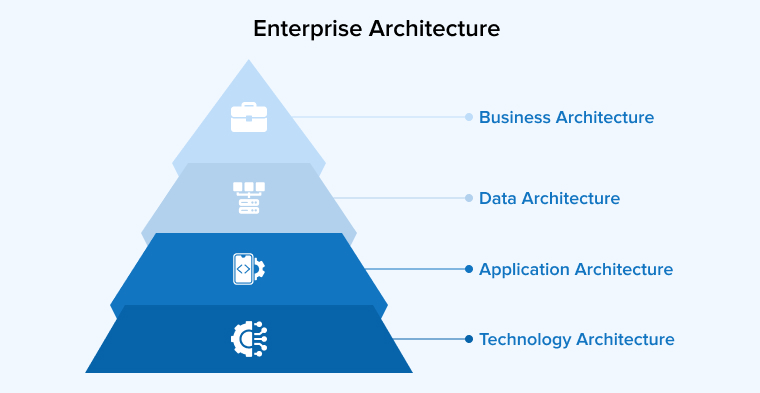
Both bespoke software and off-the-shelf software offer distinct tools to improve the operation of any firm. Achieving a payback on your enterprise architecture (ROI) demands an awareness of how the architecture and function of a business are established. This is true for large organizations, multi-city businesses, limited staff, and sole proprietors alike.
Enterprise architecture is a precise method for doing the business assessment, designing, management, and execution utilizing a complete approach at every phase in order to establish and execute strategy successfully.
Enterprise architecture assists firms in structuring IT software operations and policies to accomplish desirable business outcomes, remain abreast of market trends and challenges utilizing enterprise architecture standards and procedures.
Enterprise architecture ensures that there is a strategy and that blocks are not built arbitrarily. No organization desires for each section to have its own database and technology; all tools must be integrated to provide simplified business processes.
2. Types of Application Architecture
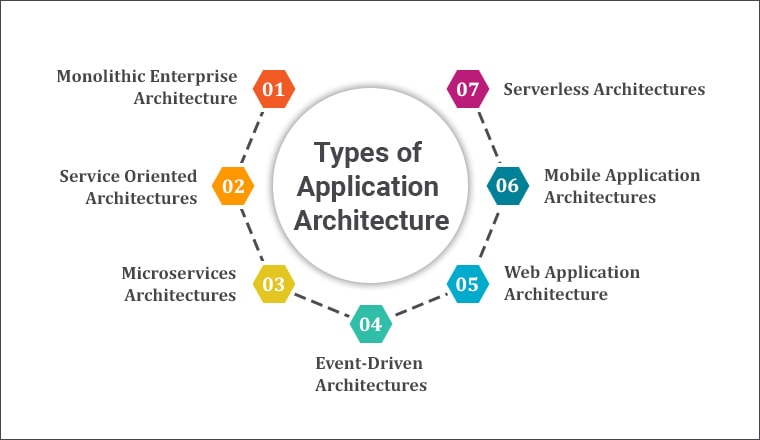
Architecture in the real world frequently adheres to a certain style. We generally understand what to anticipate when a structure is characterized as “Windsor” or “Gothic.” Simply put, this implies that the developer and enterprise architects have decided to use specific design elements that are characteristic of a particular style of ideas for which there’s a term. Likewise, there are multiple streams of ideas within enterprise architecture that, when pursued, yield similarly varied architectural outcomes. Let us look at some of the types of application architecture.
2.1 Monolithic Enterprise Architecture
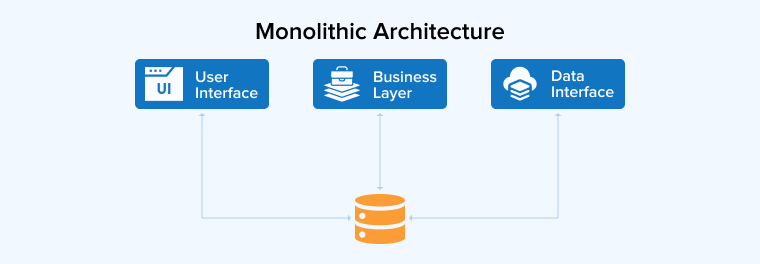
Typically, monolithic enterprise software architecture is linked with old systems which were designed before the advent of newer services-oriented frameworks. In this design, every function is self-contained. Therefore, any changes must be reviewed and revised throughout the whole program. There are several explanations why this strategy is hardly adopted anymore. For example, monolithic software is complicated, unable to grow, and tough to update. Nevertheless, it is ideal for tiny enterprise applications with little operability and low-traffic utilities like online calculators and blogs.
2.2 Service Oriented Architectures
Service oriented architecture is an evolution of Message Bus Architecture. This architecture’s advancement is the awareness that many corporate tasks with significant precision are automated in numerous locations.
The majority of the programs will incorporate a user interface, the majority will be concerned with protection, the majority will execute some type of business logic, etc. The service oriented architectures suggest that the software should be refactored, and these parts of operation should be eliminated and represented as a single ‘service’ that can be accessed in real-time. So, for instance, assessment becomes the role of the information delivery service, which could be incorporated via a database system, the user interface may be assigned to a portal service, security features will be applied by a verification and authorization service, and application logic may be performed by a business rules service.
The most probable choices for service orientation are often business-neutral, due in part to the prevalence of these services throughout the application inventory, as a result of building a service.
Exemplified to its logical extreme, service orientation enables programs to abdicate duty for safety, business logic, execution, delivery, leaving just data storage and configuration. Using a middleman to establish service orientation in a communication context is optional and not required. The majority of the existing literature conflates the technology of successful execution with the notion, particularly when the tech of execution is Web services.
2.3 Microservices Architectures
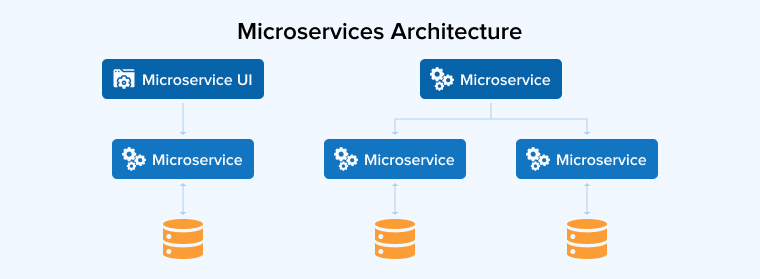
Microservices designs are extensively employed in cloud-native, agile methodologies settings, such as DevOps, which favor the utilization of microservices. With this methodology, programs are broken down into the tiniest, most loosely linked, operationally independent, and most reusable modules feasible. Enterprise software developers construct apps from microservices, hence accelerating software development. The resultant applications are scalable and robust, as the loss of a single service does not take down the program as a whole. They also allow for the introduction of upgrades without disturbance. Numerous programmers can simultaneously work on a single project.
2.4 Event-Driven Architectures
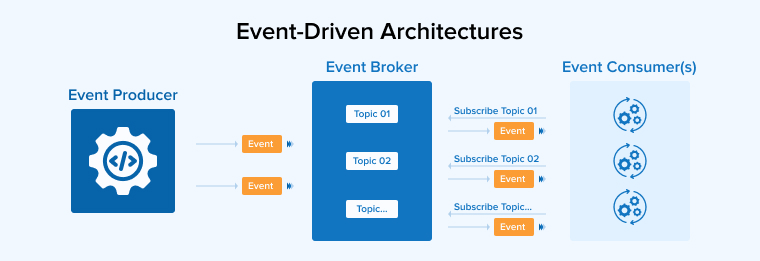
In real-time computing and self-service settings, event-driven architectures are commonly employed. Rather than handling data in chunks on a predetermined timetable, event-driven systems react to occurrences such as the touch of a button, the scan of a bank card, or the measurement of a device’s temperature. Event-driven systems are frequently implemented on top of microservices enterprise architecture due to the fact that one event initiates a series of distinct activities related to the action.
2.5 Web Application Architecture
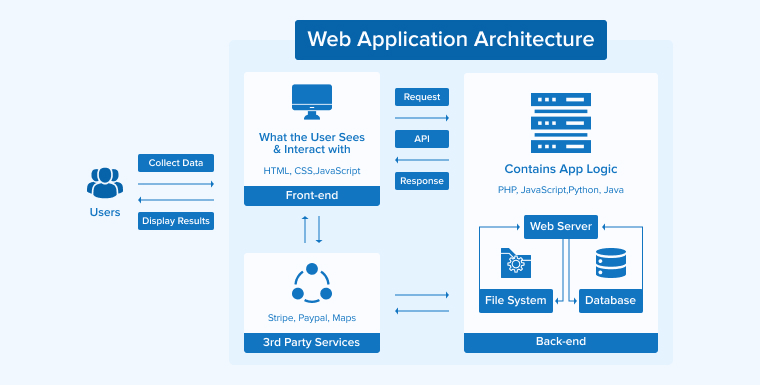
The most recent technological development is Web services. Web services are poised to become the embodiment of the Message Bus Architecture depending on open standards. Where programs now use a vendor-specific adapter to connect with the Message Bus, a common Web service interface will be implemented.
Whereas the Message Bus Architecture handles message routes utilizing a bespoke extensional routing or orchestration tool or with explicit publication logic, the web design will employ the equivalent web service standard, currently BPEL4WS. In contrast to the Message Bus Architecture, which provides promised delivery using proprietary queuing methods like IBM-MQSeries and many others, the Web service architecture will employ emerging protocols like HTTP-R or Web services reliable messaging.
Web services standards are now insufficient and do not completely overlay the offers of private companies, but the promise is apparent that Web services will soon provide an open standards substitute. Web services are juncture links by nature. This will construct a state-of-the-art version of the default architecture, with enterprise software firmly coupled to one another via a large number of unregulated interfaces if used incorrectly. In consequence, the orchestrated Web service architecture provides a broker to whom all Web service queries are directed, and that is accountable for passing those responses to the programs delivering the service.
This centralized orchestration enables the Web service architecture to remain disconnected. Likewise, by implementing asynchronous request/reply logic that is, the client does not stall while awaiting the response and by improving the normal Web service request via HTTP with assured delivery, the broker is capable of establishing an ecosystem comparable to the Message Bus Architecture. The Web service architecture is now functioning and supported by a number of unique solutions. It is superior to the Message Bus Architecture because it is built on open standards, hence avoiding vendor lock-in.
2.6 Mobile Application Architectures
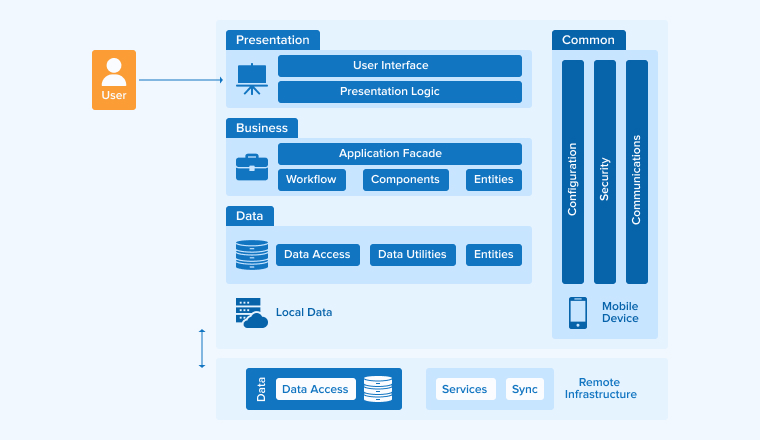
Similar to their web-based counterparts, mobile application designs take into account the increased processing, memory, and storage capabilities of mobile devices. They also define structures for platform portability.
2.7 Serverless Architectures
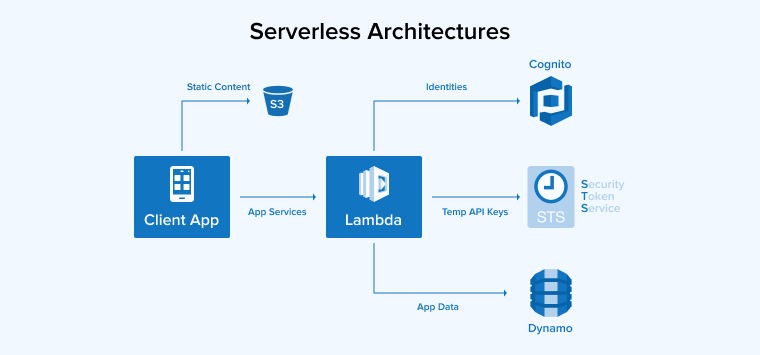
The most recent iteration of the microservices concept serverless architecture, is still uncommon. Using this methodology, applications are built using cloud-based third-party services that operate within enterprise software containers. Serverless services are scalable and can be rapidly set up and taken off. As cloud servers are not required, serverless deployment is also one of the most cost-effective methods for deploying enterprise software. Event processing, image recognition, automated software testing, and machine translation are popular applications.
3. Application Architecture Best Practices
An efficient architecture is constructed to survive the test of time, support the company’s enterprise software development methods, optimize adaptability, and reduce complications and technical waste. It is consensus-driven, that implies that everyone participating in designing and developing software must agree on the concepts and operations.
Architectures should be developed to strengthen the size and expedite reusability. In addition, they should reduce dependence among layers by defining communication requirements. For instance, the database layer should not ever rely on presentation layer methods to avoid building unbreakable dependencies. Likewise, end-user activities at the presentation layer must be segregated from one another so that numerous users may be handled concurrently and user engagements do not become reliant on neighboring corporate or database services.
Even inside layers, interdependencies should be reduced to a minimum. For instance, contracts and consumers have a strong relationship, yet each should be allowed to operate independently. If dependencies are required, the pieces should be consolidated into a single module.
Care should be used while selecting modules for inclusion in layers. For instance, corporate rules should not be specified in the database layer, and database policies should not be specified in the business layer. Instead of general-purpose duties such as identification or verification checks, business layer components should be restricted to those operations that are unique to the business needs.
Direct connections between the display layer and database layer shall be minimized as a general rule. A secure strategy would be to disclose open data as read-only and submit modifications to security restrictions.
4. How to Choose the Right Enterprise Architecture
There is no ideal architecture for each and every use scenario, but the majority of architectures are adaptable enough to accommodate multiple applications’ use cases. You may reduce your options by beginning with the required features and working your way around to the underlying technology. In some circumstances, it may be required to combine elements of several architectures.
Here are some of the questions you may consider:
1. What functionality must be present?
The greater the complexities, the more microservices or serverless systems should be utilized. On-premises programs that are relatively basic may be best adapted for a monolithic or service-oriented architecture.
2. What is the significance of productivity and flexibility?
Microservices-based applications are superior in both respects. Components of web application architecture could also be used to allocate a portion of the handling to user endpoints.
3. Where will the enterprise software be stored?
If the application is hosted in the cloud, cloud-native technologies like containers and microservices should be utilized. If it is built to operate on a particular cloud, then utilize the system operator’s design frameworks (e.g., Amazon Web Services). Enterprise Software that operates behind an industry’s firewall can utilize environment-specific service-oriented or microservices meanings.
4. How quickly will the Enterprise software evolve?
If you intend to make considerable or rapid improvements, you should adopt a services-based strategy. A monolithic design may be acceptable for a purpose-built application with infrequent updates.
5. What is the degree of expertise of your development staff?
This is a crucial topic given that microservices, containers, DevOps, and serverless application development are radically different from conventional methods. Once the team is ready to pace, you may choose a robust monolithic or service-oriented design and then shift progressively to new constructions.
5. Conclusion
The selection of enterprise application architectures is crucial for developing an IT infrastructure that is responsive to business demands and promotes the organization’s most valuable traits. All of the architectural types discussed here are genuine options, much as constructing a home in the Gothic style or the Windsor style are both valid options. Nevertheless, it is the designer’s obligation to guarantee that the selected design is suitable for its surroundings.
Despite the fact that these architectural schools are developing and new ones are being formed, it is evident that the majority of businesses may benefit from adopting a specified enterprise application architecture.

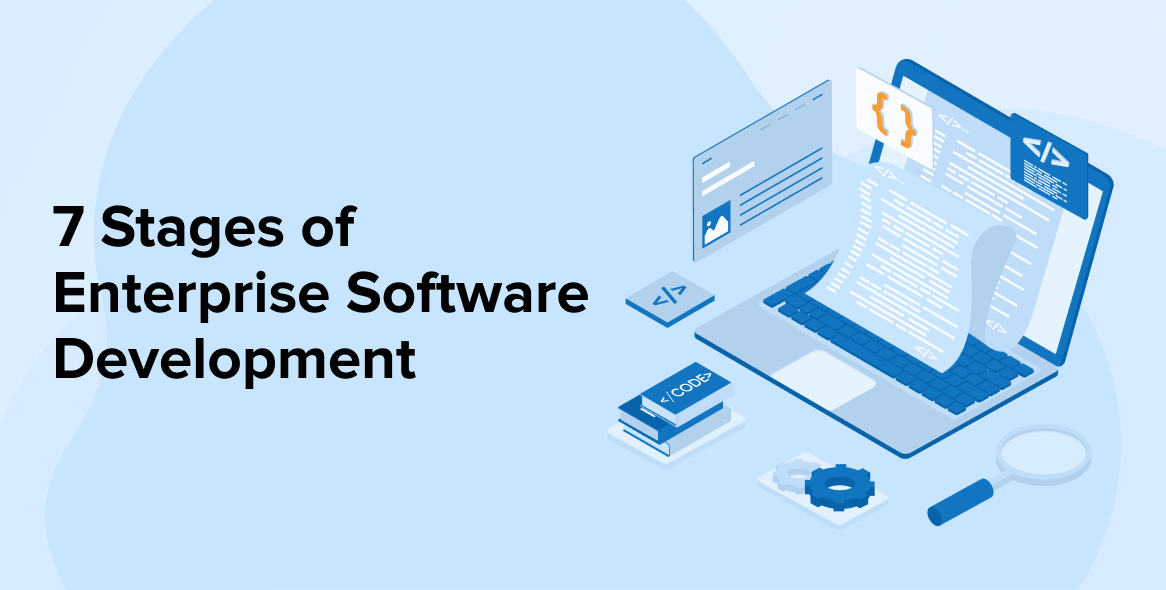
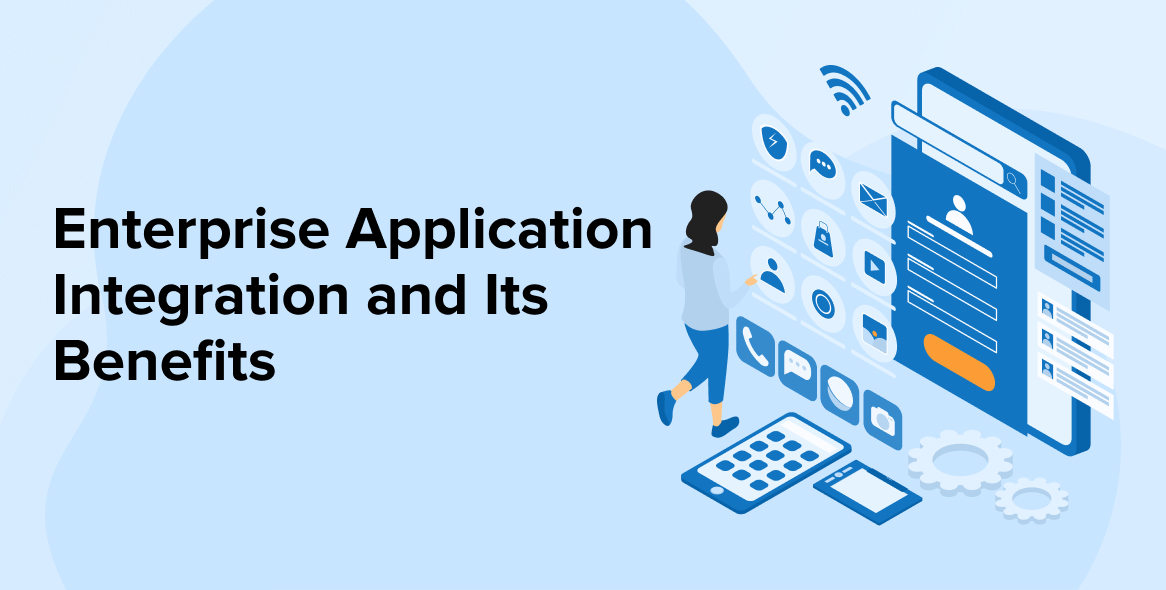
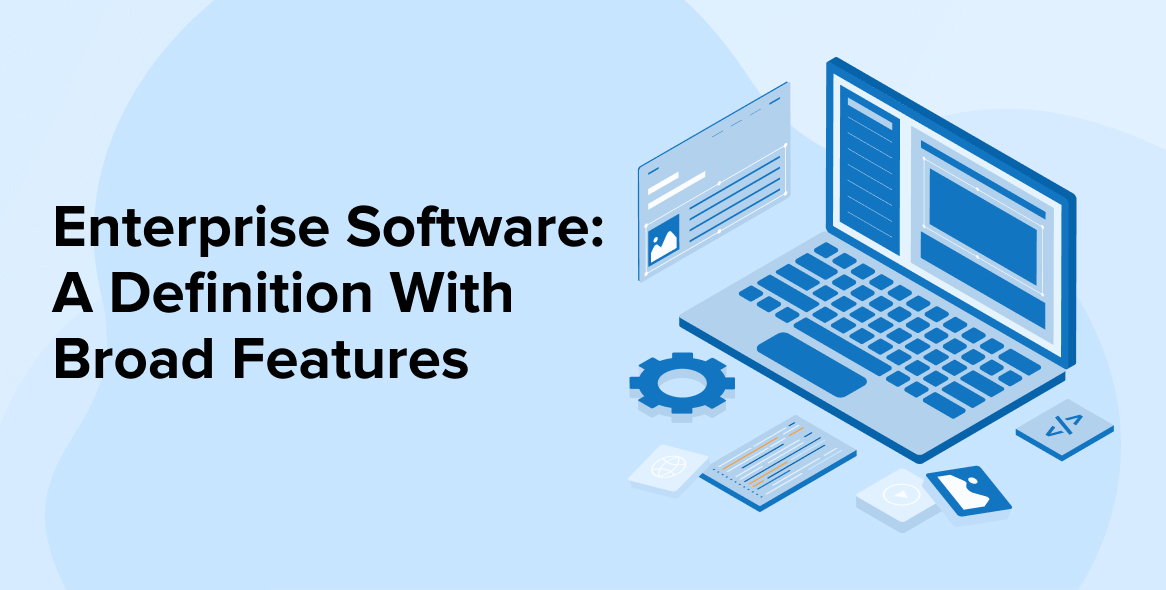
I found this blog to be an informative read on enterprise application architecture. The blog offers practical guidance and real-world examples, making it a valuable resource for architects, developers, and IT professionals involved in designing and implementing enterprise applications.
As a software developer, I appreciate the in-depth analysis and best practices shared in this blog on enterprise application architecture. The content is presented in a concise and organized manner, making it a valuable read for anyone involved in building enterprise-level applications.
I appreciate the detailed insights and best practices shared in this blog on AngularJS to Angular migration. The blog covers important aspects such as code refactoring, component-based architecture, and testing, making it a valuable read for developers who are looking to upgrade their AngularJS applications.